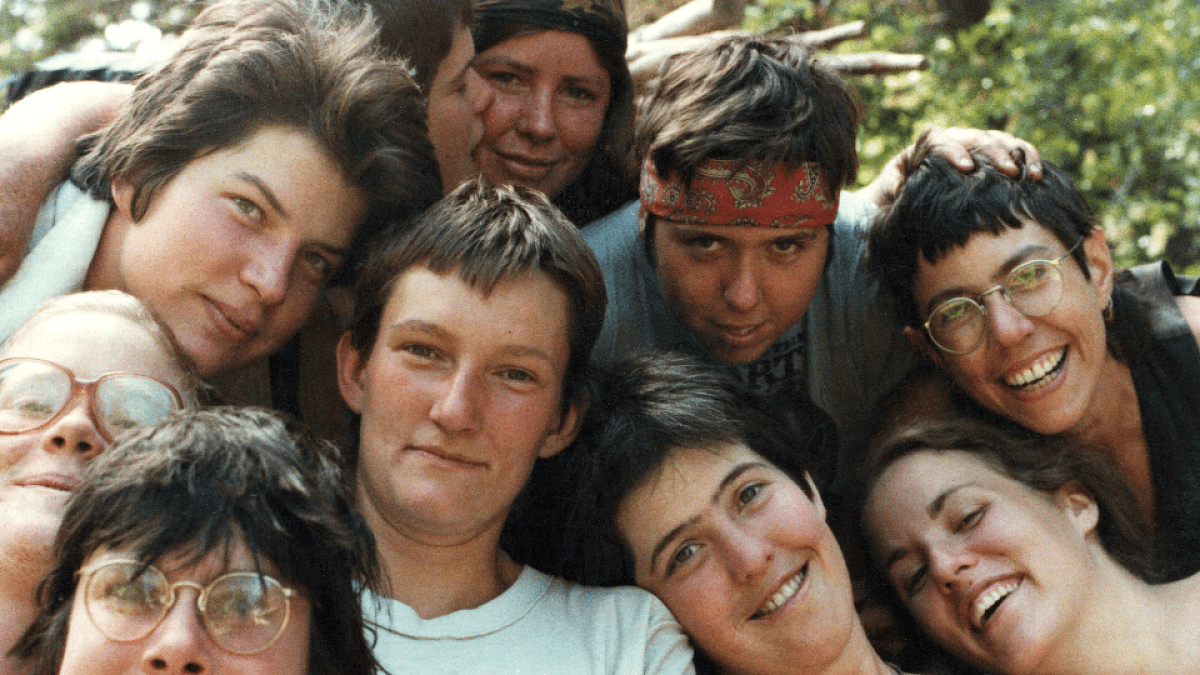A new exhibit at the UO’s Museum of Natural and Cultural History invites people to learn about Eugene’s historic lesbian community from the women who created and sustained it.
“Outliers and Outlaws—Stories from the Eugene Lesbian History Project” puts a new spotlight on local queer history. The exhibit opens Saturday, Jan. 28, and runs through 2023.
Hundreds of young women identifying as lesbians came to Eugene in the 1960s through the 1990s. Exhibit organizers say they founded organizations central to the city and provided leadership for community service agencies. They created lesbian magazines, music, films, dance performances, theater and art. As a community, they influenced Oregon's political landscape and contributed to the national LGBTQ movement.
“In many ways, the city of Eugene as we know it today exists thanks to these women,” said Ann Craig, associate director of administration at the museum. “Do you remember Mother Kali’s bookstore or the Riviera Room? Eugene’s lesbian community is one of the things that makes this a special place.”
One of the interviewees agrees.
“The lesbian community, as far as I was concerned, ran the town,” said Judy Goldstein in an interview with the Eugene Lesbian Oral History Project. “I mean, we had lesbian restaurants and doctors and Jackrabbit Press and Starflower (Natural Foods & Botanicals). And bands, zillions of bands, none of which I was in, but all of which I danced to.”
The exhibit is a collaboration between the museum, the University of Oregon Libraries Special Collections and University Archives, and the College of Arts and Sciences. Between 2018 and 2019, Judith Raiskin, associate professor of women’s, gender and sexuality studies at the university, and Linda Long, curator of manuscripts, began interviewing dozens of people in what would eventually be the Eugene Lesbian Oral History Project and digital exhibit.
“In 2016 I attended a memorial service for a woman who was central to the lesbian community,” Raiskin said. “Her friends, now in their 60s and 70s, shared photo albums full of pictures of groups of young women gloriously engaged in work and play. They shared stories that celebrated their friend and all their relationships over the years. It was a rich history that I thought must not be lost.”
Long had already created several lesbian-focused collections held in the UO Libraries Special Collections and University Archives, including extensive Oregon Lesbian Communal Lands manuscript collections, the Ruth Mountaingrove Papers, and the Tee Corinne Papers.
Together, the pair filmed interviews with more than 80 members of Eugene’s lesbian community, covering topics from lesbian-owned businesses and art collectives to the fight for marriage equality. The museum will host a series of panel discussions covering those topics throughout the year, beginning with Worldmaking: Eugene’s Lesbian Arts and Culture Scene on Feb. 2 at 6 p.m.
In a series of filmed interviews prior to the exhibit, current UO students came together and discussed what this project means to them.
“It makes me feel validated to see people who, decades ago, were going through the same things I’m going through,” one said. “And they’re doing amazing, and they’re thriving in their queerness.”
“You never hear about queer joy in queer history,” another said. “There’s no happiness in older queer history. It’s always like, ‘They were always fighting against something and there was always something wrong, they were always being sent to conversion therapy, and it was just all bad things.’ You never get shown that they were still able to make community.”
Exhibits and programs are included with regular admission; admission is free for museum members and UO ID card holders. Show an Oregon Trail or other EBT card for an admission discount. Visit the museum's website for more information.
— By Lexie Briggs, Museum of Natural and Cultural History


